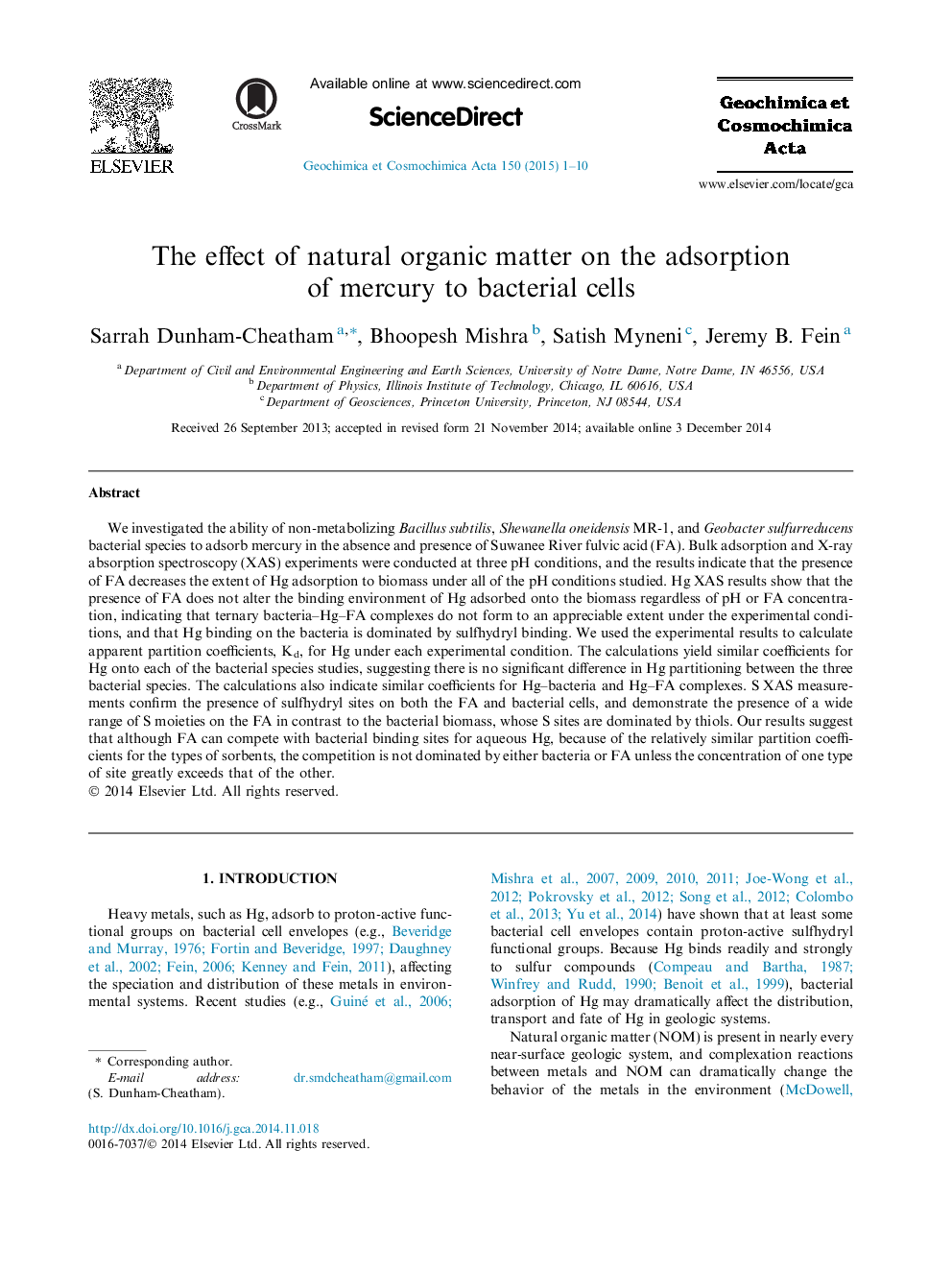| Article ID | Journal | Published Year | Pages | File Type |
|---|---|---|---|---|
| 4701980 | Geochimica et Cosmochimica Acta | 2015 | 10 Pages |
We investigated the ability of non-metabolizing Bacillus subtilis, Shewanella oneidensis MR-1, and Geobacter sulfurreducens bacterial species to adsorb mercury in the absence and presence of Suwanee River fulvic acid (FA). Bulk adsorption and X-ray absorption spectroscopy (XAS) experiments were conducted at three pH conditions, and the results indicate that the presence of FA decreases the extent of Hg adsorption to biomass under all of the pH conditions studied. Hg XAS results show that the presence of FA does not alter the binding environment of Hg adsorbed onto the biomass regardless of pH or FA concentration, indicating that ternary bacteria–Hg–FA complexes do not form to an appreciable extent under the experimental conditions, and that Hg binding on the bacteria is dominated by sulfhydryl binding. We used the experimental results to calculate apparent partition coefficients, Kd, for Hg under each experimental condition. The calculations yield similar coefficients for Hg onto each of the bacterial species studies, suggesting there is no significant difference in Hg partitioning between the three bacterial species. The calculations also indicate similar coefficients for Hg–bacteria and Hg–FA complexes. S XAS measurements confirm the presence of sulfhydryl sites on both the FA and bacterial cells, and demonstrate the presence of a wide range of S moieties on the FA in contrast to the bacterial biomass, whose S sites are dominated by thiols. Our results suggest that although FA can compete with bacterial binding sites for aqueous Hg, because of the relatively similar partition coefficients for the types of sorbents, the competition is not dominated by either bacteria or FA unless the concentration of one type of site greatly exceeds that of the other.
